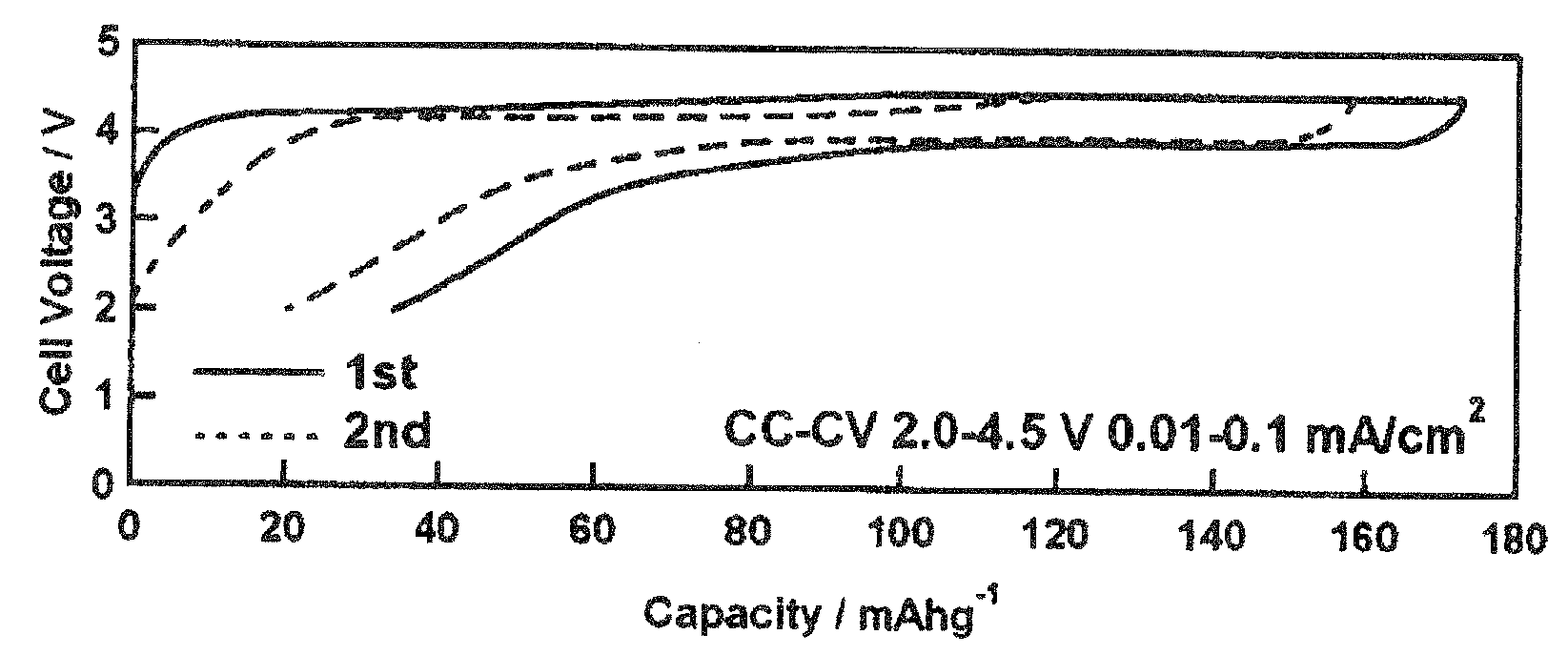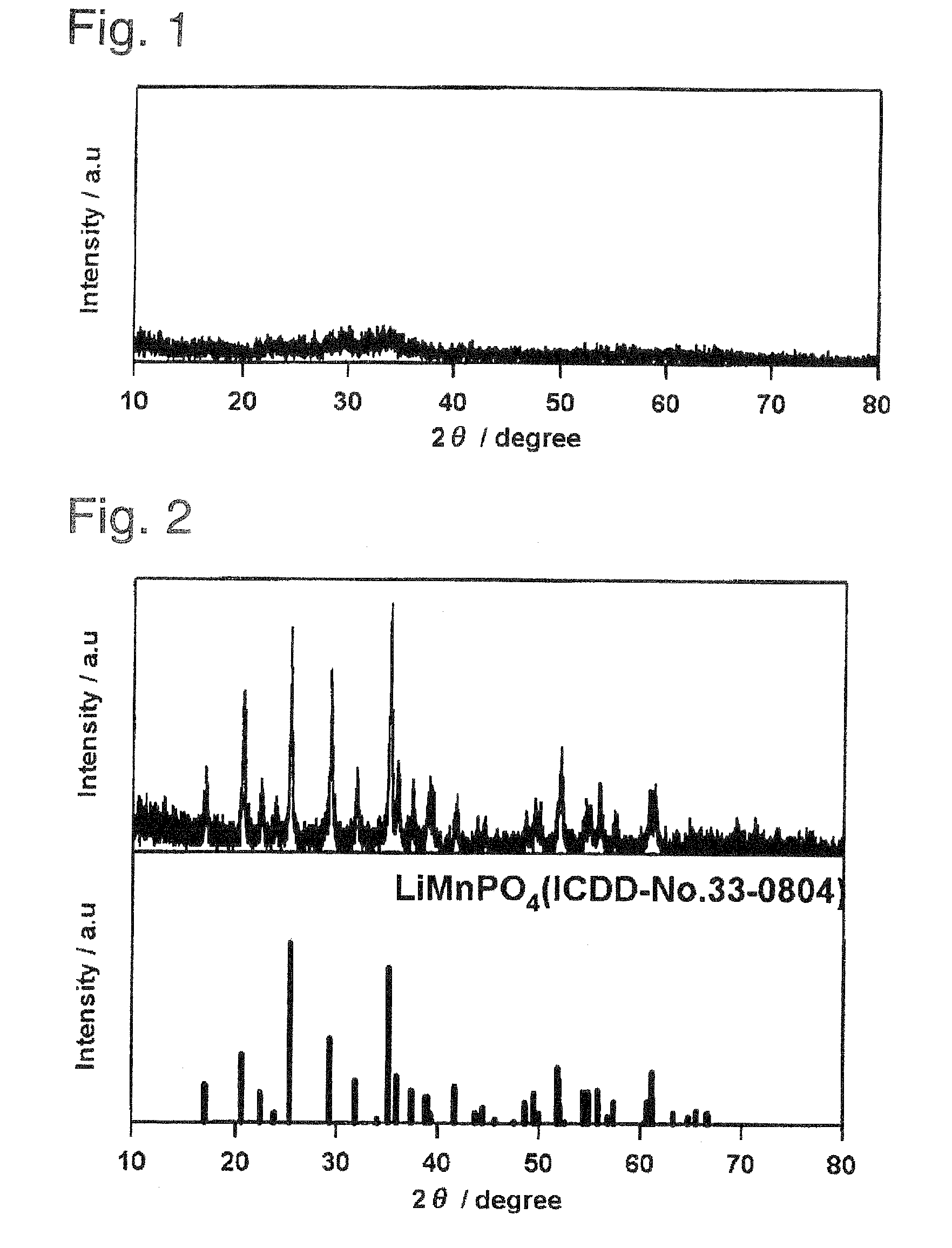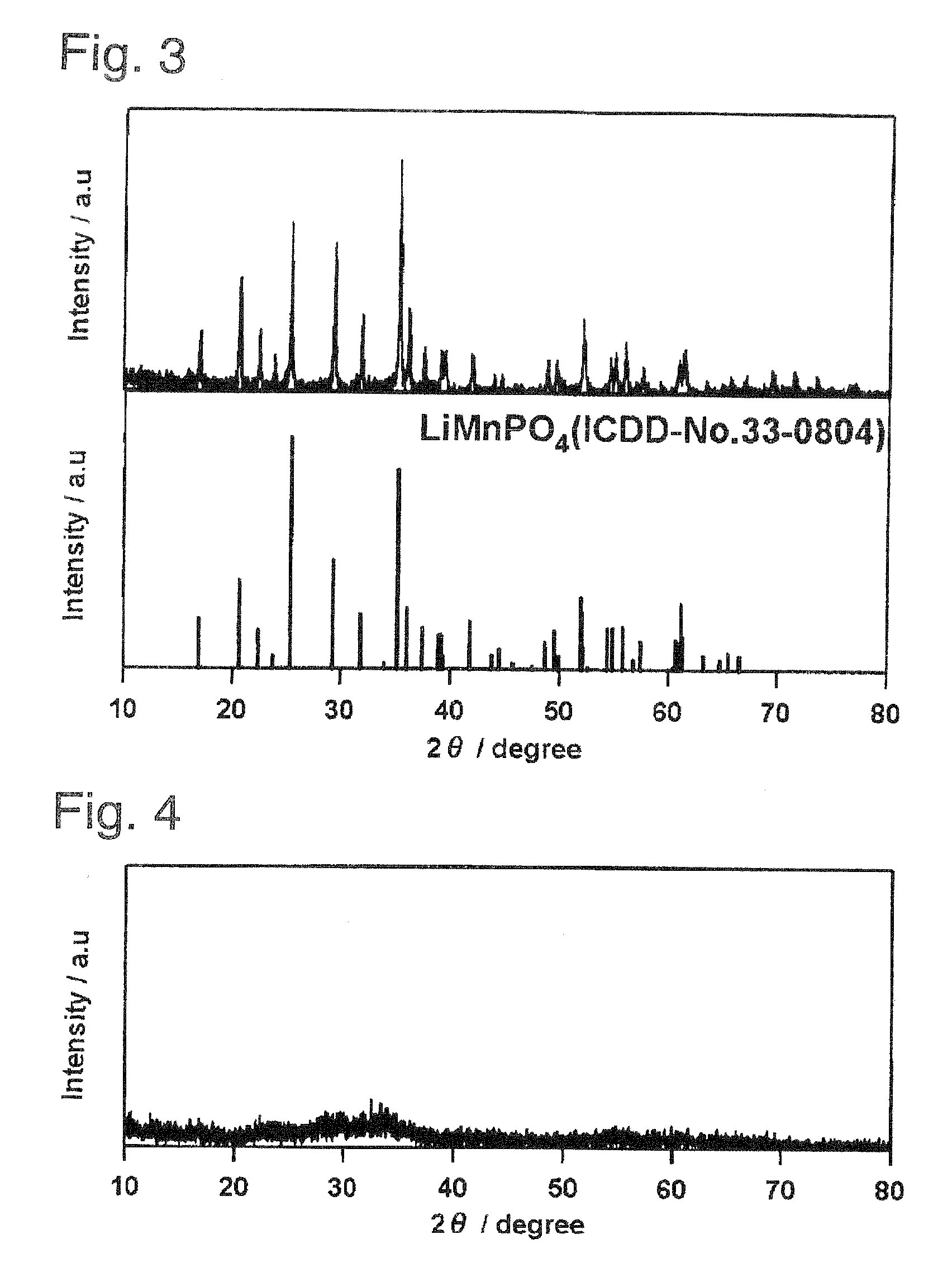Method of producing positive electrode active material and nonaqueous electrolyte battery using the same
a technology of active materials and positive electrodes, which is applied in the direction of cell components, final product manufacturing, sustainable manufacturing/processing, etc., can solve the problem of no reports of a method for which a clear improvement in the rate characteristics has been seen, and achieve the effect of easy mass production
- Summary
- Abstract
- Description
- Claims
- Application Information
AI Technical Summary
Benefits of technology
Problems solved by technology
Method used
Image
Examples
example 2
Preparative Example 2
Preparation of an LiMnPO4 Powder Specimen by Stirring for 5 Days with a Magnetic Stirrer
[0106]The following starting materials were weighed out and mixed in the stoichiometric ratio in an argon glove box so as to give a total of 10 g: lithium carbonate (Li2CO3, 98%, Wako Pure Chemical Industries, Ltd.) as the lithium source, manganese powder (Mn, 98%, Wako Pure Chemical Industries, Ltd.) as the manganese source, and diphosphorus pentoxide (P2O5, 98%, Wako Pure Chemical Industries, Ltd.) as the phosphorus source. The resulting mixture was removed from the glove box and introduced into 50 mL pure water; a reaction was run by stirring for 5 days using a magnetic stirrer; and this was followed by heat treatment for 24 hours in the air at 100° C. or 350° C. as in Preparative Example 1. The LiMnPO4 obtained by heat treatment for 24 hours at 100° C. was confirmed to be x-ray amorphous from the x-ray diffraction results shown in FIG. 4. The specimen obtained by heat tre...
example 10
Preparative Example 10
Preparation of an LiMn0.8Fe0.1Ti0.1PO4 Powder Specimen by Processing for 24 Hours with a Planetary Ball Mill
[0114]The following starting materials were weighed out and mixed in a nitrogen glove box: 0.17 mol lithium carbonate (Li2CO3, 99% up, Kanto Chemical Co., Inc.) as the lithium source, 0.25 mol manganese powder (Mn, 98%, Wako Pure Chemical Industries, Ltd.) as the manganese source, and 0.16 mol diphosphorus pentoxide (P2O5, 98% up, Kanto Chemical Co., Inc.) as the phosphorus source. The resulting mixture was removed from the glove box and introduced into 250 mL pure water and a reaction was run by stirring for 2 days using a magnetic stirrer. To the resulting suspension were then added 0.031 mol iron citrate (FeC6H5O7.nH2O, 15 to 20% as Fe, Kanto Chemical Co., Inc.) and 0.031 mol titanium isopropoxide (Ti[OCH(CH3)2]4, 95% up, Wako Pure Chemical Industries, Ltd.) while stirring. In order to bring the reaction to completion, processing was carried out for 24...
production example 1
[0115]Production of Positive Electrode Pellets
[0116]Positive electrode pellets were produced from each of the powder specimens of Preparative Examples 1 to 10 using the following procedure. Two 20-mm diameter balls, four 15-mm diameter balls, fifteen 10-mm diameter balls, and sufficient 3-mm diameter balls to bring the total to 175 g were introduced into a planetary rotary ball mill (LP-4 / 2 from Ito Manufacturing) and 2.5 g of a powder specimen from Preparative Examples 1 to 10 and 0.89 g (weight ratio=70:25) acetylene black (Denka Black, 50% press grade, Denki Kagaku Kogyou Kabushiki Kaisha) were additionally introduced. This mixture was dry-mixed for 24 hours at 200 rpm. An 80-mL partially stabilized zirconia pot was used in the ball mill. Then, in order to further raise the electroconductivity of the specimen, heat treatment was carried out for 1 hour at 500° C. in an argon atmosphere. The TG-MS spectrum shown in FIG. 9 was obtained by analysis of the generated gas at each anneal...
PUM
 Login to View More
Login to View More Abstract
Description
Claims
Application Information
 Login to View More
Login to View More - R&D
- Intellectual Property
- Life Sciences
- Materials
- Tech Scout
- Unparalleled Data Quality
- Higher Quality Content
- 60% Fewer Hallucinations
Browse by: Latest US Patents, China's latest patents, Technical Efficacy Thesaurus, Application Domain, Technology Topic, Popular Technical Reports.
© 2025 PatSnap. All rights reserved.Legal|Privacy policy|Modern Slavery Act Transparency Statement|Sitemap|About US| Contact US: help@patsnap.com



